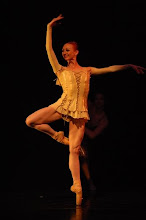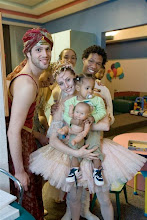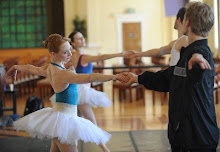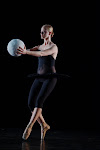Friday, April 13, 2012
Where is Cinderella in our heart?
This quote by Charles Perrault struck Cinderella’s choreographer, Steven McMahon, as a most appropriate way of describing the real beauty this tale highlights in its lead character, Cinderella. Cultures have used stories through the ages to wrestle with ideas of beauty and ugliness. One idea that has lasted a long time is the need to know who we are, especially if we believe real beauty lies in attaining happiness. The Ugly Stepsisters in Cinderella are funny because they are strong, hairy men pretending to be women. They pretend to be beautiful, but we all know they cannot be until they acknowledge their mean-spirited and dim-witted personalities. The stepsisters offer contrast to Cinderella’s beauty, who serves others thoughtfully and gently. They also allow us to laugh at their weaknesses, precisely because we know we have a bit of them in us. Steven speaks of being struck by how Cinderella never seems to be defined by her environment. She responds with kindness, even when burdened with genuine sorrow, by doing what she knows she has to do. Steven also decided to bring the mother/daughter story into Cinderellain a smart way. Mothering is a tremendous force, and like most forces, it has potential for good and bad. Protecting and nurturing our young is utterly necessary, as is letting them have their space to make their mark. But giving our children the idea that their wants and desires should be placed at the center of the universe is a terrible idea. As we see so clearly in Cinderella,The Wicked Stepmother has bred monsters in her image. Cinderella, however, teaches us that those who give, care and nurture become given to, nurtured, and cared about, which is one of those things in life that never changes. When we participate in the handing down and adaptation of culture, we can glean so much from it if we remember to examine where we fit into the story; if we remain open to the possibilities for transformation.
Where is Cinderella in our heart? She who serves others and helps the needy? When are we as Fairy Godmothers, recognizing good and moving it forward? When do we reward excellence and do the difficult work of demanding it, not settling for the ease of imitative mediocrity? When are we willing to do the work, write the check and put in the time, instead of waiting for someone else to do it for us? Are we going to be Memphis with leaders like the Pharaoh, believing in , supporting and searching for real creativity and beauty? The more we can honestly search our hearts and answer yes the better our lives will be. And I hope we will always have art to prod us, inspire us and push us toward being the better selves we can be.
—Dorothy Gunther Pugh
Wednesday, April 11, 2012
On musicals, Gene Kelly and Swan Lake...
 My parents have always loved watching old musicals. Even at our family Christmas party, my parents, still to this day, get up and sing a song from Showboat together during the talent portion of the evening. Yes, you heard me right, a talent show in the middle of Christmas Eve dinner with 50 relatives watching. So I was constantly surrounded by musicals that I haven’t even seen. I will never forget the day that my parents and I watched An American in Paris with Gene Kelly. I was about 7 years old and in complete awe. I couldn’t believe how he moved his body, his agility, his strength, and of course that face. You fell in love with that smile!! After that night, we rented Brigadoon and of course Singing in the Rain. From then on I was hooked. I knew I wanted to do what Gene did, maybe not in a movie, but to perform. And I knew I had that ability after I had done a few plays at school. I wanted to move like him and touch people in the way his performances touched me.
My parents have always loved watching old musicals. Even at our family Christmas party, my parents, still to this day, get up and sing a song from Showboat together during the talent portion of the evening. Yes, you heard me right, a talent show in the middle of Christmas Eve dinner with 50 relatives watching. So I was constantly surrounded by musicals that I haven’t even seen. I will never forget the day that my parents and I watched An American in Paris with Gene Kelly. I was about 7 years old and in complete awe. I couldn’t believe how he moved his body, his agility, his strength, and of course that face. You fell in love with that smile!! After that night, we rented Brigadoon and of course Singing in the Rain. From then on I was hooked. I knew I wanted to do what Gene did, maybe not in a movie, but to perform. And I knew I had that ability after I had done a few plays at school. I wanted to move like him and touch people in the way his performances touched me.A few years later, I had been taking tap, jazz and ballet lessons. My mom saw that American Ballet Theater was performing Swan Lake in downtown Chicago. We didn’t have tickets, but she thought we would make the drive downtown and take a chance. Sure enough someone who had 5th row seats turned them in at the last minute. My mother bought them and I am so glad she did. That show changed my life.
I remember watching, not even blinking, at how a woman could transform into a Swan. She moved her arms with such fluidity, as if she had wings. It was the most magical and beautiful thing I had ever seen. From that moment, at 12 years old, I made the decision to do everything I could to dance. I didn't know if I could eventually become a professional dancer, but I knew I had to try. I knew I had something inside of me that I had to share. Now, I have made a life and career at Ballet Memphis for the past eight years! So, thank you, Mom and Dad, for taking chances with me, for exposing me to art, for always supporting me and sharing a love for dance.
—Julie Marie Niekrasz Strampe, dancer
Monday, April 2, 2012
Students and company members, together, learning and creating

Throughout my 15 years at Ballet Memphis, I have worked with many teachers. Some have come and gone, and some I have known my entire time here. It was not until I advanced to the higher levels in the school that I started to have guest company-member teachers who would teach once or twice a semester, usually as a substitute or for a workshop class.
I took my very first company-member–taught class in the eighth grade by Steven McMahon. Anyone who is familiar with Steven as a dancer could imagine the immediate intimidation my friends and I felt. Towering over all of us with a serious expression, Steven began his introduction by detailing his experiences at Alvin Ailey, the world-renowned modern dance company in New York City. Needless to say, I was terrified. Who was this Horton he kept speaking of, and why could I never remember the intricate combinations we learned every week in class? (This “Horton,” or Horton Technique developed by Lester Horton, utilizes a whole-body, anatomical approach to dance that includes flexibility, strength, coordination and body, and spatial awareness to enable unrestricted, dramatic freedom of expression.)
I would only get worse before I started making small steps toward understanding and appreciating my discomfort in the class. We continued taking weekly modern classes from Steven, and I can only describe the last five years as one of the most transcending journeys I have encountered thus far. I progressed from the nervous girl who sought to dance in the back, to the person who fights for a spot in the front. I wish I could have seen how important these classes were for my development as a dancer when I first began, but at the same time, I view the struggle that I faced by enduring these classes that much more inspiring.
More recently, company members have begun teaching our ballet classes. Twice a week, they teach our class, including a workshop ranging from pointe variations to Pilates. At the same time, they are able to integrate goals they are striving for in their everyday work and classes into the classes they plan for us.
I love having company members teach our class. I get to watch my own teachers go out onto a stage and exude the same passion and commitment they encourage me to pursue. I can honestly say I have learned more by watching my teachers on stage performing than I think is possible through daily practice in a studio. They have shown us through their own work how to pursue what we love and embrace our artistic abilities in a whole new way.
Aside from regular class, I have had the opportunity to perform with the company in numerous productions of the Nutcracker, once even being granted the honor of understudying and performing as a Snowflake my junior year. What may have seemed like a familiar corps role many company members had performed several times already, was my pride and joy for the few months I attended rehearsals. I was, however, terrified that I was going to mess up or stick out as an obvious student. However, I was faced with nothing but kindness and encouragement from the company women I understudied. I learned so much from my time understudying, and I will always cherish that opportunity as one of great honor and professionalism.
As my time at Ballet Memphis comes to a close when I graduate this year, I also appreciate working with company members who choreograph on us for our Junior Company shows. I have worked with a couple of company members in this atmosphere and enjoyed some of the most fun and most challenging experiences I have had at Ballet Memphis. Aside from getting to know them in a more personal setting, we are challenged to dance outside of our everyday ballet technique and can explore different styles of movement. Learning to work with new choreographers and integrating new repertoire and movement into our dancing allow us to enhance our dance abilities in a way that everyday class cannot.
As we spend more time together—company and students—a different relationship has emerged. At first I attributed the changing relationships to my age and seniority in the school before I realized that the company is not just teaching higher levels anymore. Company members, apprentices and trainees teach younger levels, thus connecting with students of all ages throughout the school.
The Ballet Memphis School is always changing and growing, but I never realized that it might also be changing the relationships between the students and company holistically. Our interactions with teachers and choreographers have opened up opportunities for us to regard them as mentors, role models, and although some of them would refuse to admit it, even friends.
Lauren Petrin (student, left) with dancer Stephanie Mei Hom (right) backstage at Nutcracker.











